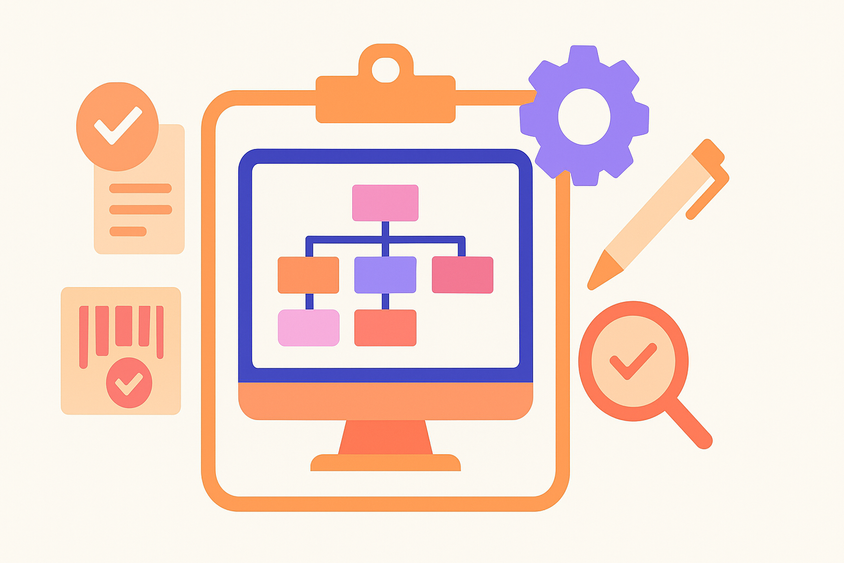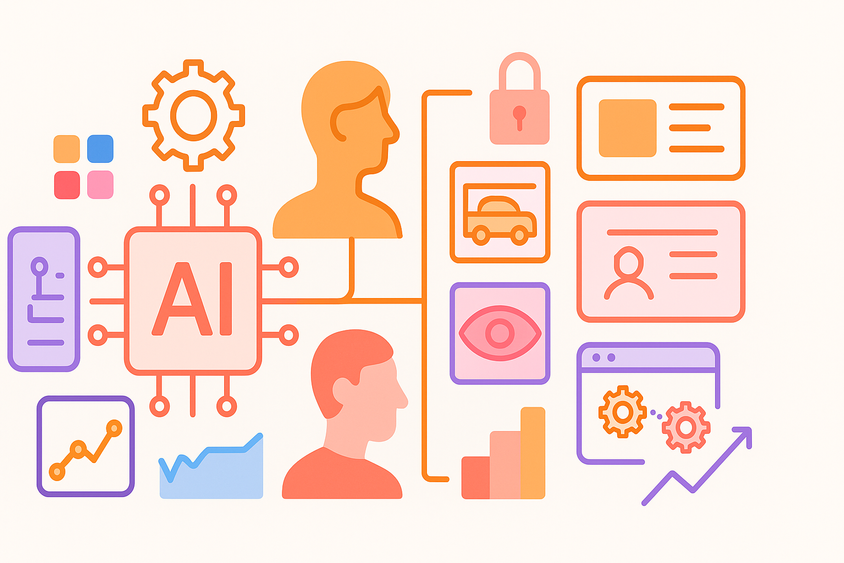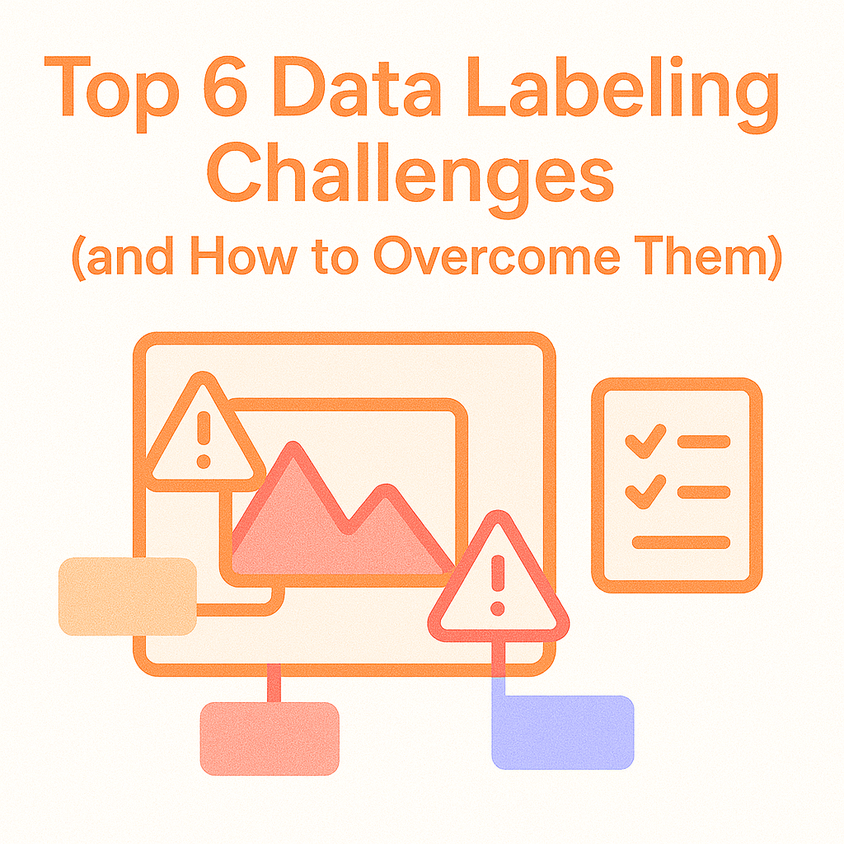A Guide to Data Labeling

Data labeling is the essential but often underestimated backbone of modern machine learning. Without it, even the most advanced models can't learn to interpret raw information accurately, whether that’s classifying an image, extracting meaning from a sentence, or detecting anomalies in time series data.
In its simplest form, data labeling is the process of assigning meaningful tags or annotations to raw data so that machines can learn from it. But beneath that simplicity lies a complex web of workflows, tools, job roles, and quality control systems that make the difference between a model that merely functions and one that delivers real-world value.
In this guide, we’ll break down the fundamentals of data labeling, explore the types of roles involved, highlight what to look for in a data labeling platform, and show how tools like Label Studio help teams move from experimentation to production.
Why Data Labeling Is a Critical Step in ML
Labeling data enables machine learning models to detect patterns and make predictions. But labeling isn’t just about sticking a tag on an image or highlighting a sentence. It’s about ensuring consistency, accuracy, and structure at scale, so your models don’t just learn—they learn the right things.
For example, consider a model designed to identify product defects from images. If one annotator marks a defect as “crack” and another calls it “fracture,” the model receives conflicting information. Poor annotation can introduce noise that cascades into training and evaluation, skewing results and leading to unreliable deployments.
This is where structured quality control becomes essential. Successful teams move beyond random spot checks and implement workflows like consensus scoring, reviewer queues, and disagreement analysis. Platforms like Label Studio surface annotation inconsistencies automatically, helping teams maintain dataset integrity as they scale.
Who’s Doing the Labeling? (And Why That Matters)
Data labeling jobs come in many forms. Some are performed by in-house subject matter experts, especially when the task requires deep domain knowledge, like medical imaging or legal document review. Others are handled by crowdsourced workers or specialized vendors who label at scale under clear instructions.
The roles involved typically include:
- Annotators who apply labels to raw data
- Reviewers who validate labels and catch inconsistencies
- Project managers or ML engineers who design the labeling guidelines and QA workflows
Depending on the complexity of the task, teams might also include dedicated operations roles or automation specialists focused on integrating model-assisted labeling. Platforms like Label Studio make it easier to coordinate across roles, with features like role-based permissions, reviewer queues, and task distribution built in.
As teams scale, maintaining performance visibility becomes critical. Label Studio’s dashboards offer real-time insights into annotator accuracy, agreement scores, and project health—so teams can quickly spot bottlenecks or retraining needs.
What to Look For in a Data Labeling Platform
Not all data labeling tools are created equal. Choosing the right one depends on your use case, team structure, data types, and long-term goals. Here's what matters most:
- Multi-modal support: Text, images, video, audio, and time series often need to be labeled as part of the same project. Label Studio handles all of these data types in one unified platform.
- Customizable interfaces: Each annotation task is different. You should be able to tailor the labeling UI—from dropdowns to bounding boxes—to fit your needs. Label Studio offers customizable templates and interfaces.
- Scalable team management: As projects grow, so does the need for granular roles and access control. Label Studio’s enterprise version supports robust permissions and role-based access at scale.
- Quality assurance workflows: Consensus scoring, review queues, and disagreement handling should be built in. This helps catch low-agreement tasks before they affect your training data.
- Model-assisted labeling: Look for integrations with your ML stack that support pre-labeling and human-in-the-loop correction. Label Studio lets you connect your own models (like YOLO, GPT, or custom APIs) for real-time annotation support.
- Monitoring and analytics: You need visibility into progress, accuracy, and agreement scores. Label Studio’s dashboards make it easy to monitor these metrics and catch problems early.
Labeling Workflows and Automation: When to Involve Models
As datasets grow, manual labeling becomes expensive and time-consuming. That’s where model-assisted labeling—also called pre-labeling—comes in. This workflow allows teams to use a model to generate initial labels, which annotators then review and correct.
Model-in-the-loop setups are becoming the norm. But they only work when the transition between model and annotator is smooth. Label Studio supports ML backend integration out of the box, allowing your team to plug in a model, route predictions to annotators, and build feedback loops that continuously improve both model performance and labeling efficiency.
How to Label Data at Scale Without Losing Quality
The challenge with scaling is not just doing more of the same—it’s doing it reliably. Teams that scale well treat labeling as an integral part of the ML development lifecycle.
This means:
- Defining clear annotation guidelines
- Establishing consensus and review processes
- Tracking disagreement and annotator accuracy
- Using real-time analytics to monitor project health
Label Studio supports all of these needs through built-in tools for reviewer workflows, role-based access, and real-time dashboards. These features are critical for keeping labeling quality high as complexity increases.
Bringing It All Together
Whether you're just beginning to build your training dataset or managing a multi-team annotation pipeline, data labeling is the connective tissue that holds your machine learning stack together. It impacts model performance, developer efficiency, and even compliance.
By choosing the right data labeling tool, structuring your team thoughtfully, and investing in workflows that evolve with your project, you set your models up for success.
Label Studio supports every stage of the labeling journey—from one-off tasks to enterprise-scale deployments. Its flexibility, open-source foundation, and growing ecosystem make it an ideal platform for teams who want full control without unnecessary complexity.
Ready to streamline your labeling workflows? Try Label Studio for free.
Frequently Asked Questions
Frequently Asked Questions About Data Labeling
What is data labeling in machine learning?
Data labeling is the process of annotating raw data (such as text, images, audio, or video) so that machine learning models can learn from it. Labels act as the “ground truth” that models use to detect patterns and make predictions.
Why is data labeling important for AI?
Data labeling provides the foundational training data required for supervised learning. Without high-quality labeled data, machine learning models cannot learn accurate patterns, leading to poor performance in real-world applications.
What are the most common data labeling tools?
Popular data labeling tools include Label Studio, Prodigy, and Amazon SageMaker Ground Truth. The most effective platforms offer multi-modal support, customizable interfaces, quality control features, and model integration capabilities.
How do I choose the right data labeling tool?
When evaluating a data labeling platform, look for support for your specific data types, collaborative features for team management, customizable interfaces, and seamless integration with your machine learning pipeline.
What types of data can be labeled?
You can label many types of data, including:
- Text (e.g., sentiment, named entities)
- Images (e.g., object detection, segmentation)
- Audio (e.g., transcription, event detection)
- Video (e.g., frame-by-frame tagging)
- Time series (e.g., anomaly detection)
Who performs data labeling jobs?
Data labeling can be done by in-house subject matter experts, third-party vendors, or crowdsourced workers. Roles typically include annotators, reviewers, and ML engineers who oversee quality assurance and workflow design.
How do I maintain high-quality labels at scale?
To ensure quality at scale, use clear annotation guidelines, implement reviewer workflows, track annotator agreement, and use tools with built-in quality control features like consensus scoring and disagreement analysis.
Can I use Label Studio for enterprise-level labeling?
Yes. Label Studio Enterprise offers advanced team management, quality control, and ML model integration features designed for scalable, secure, and collaborative annotation workflows.


